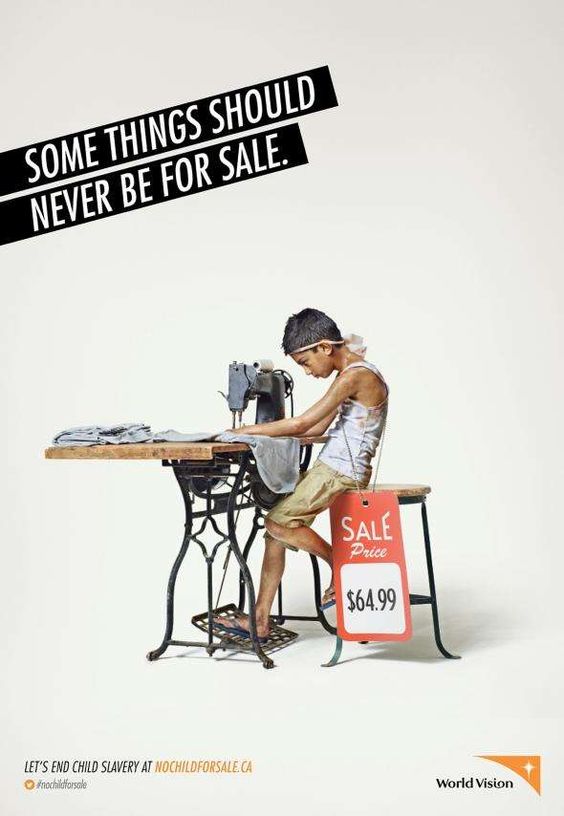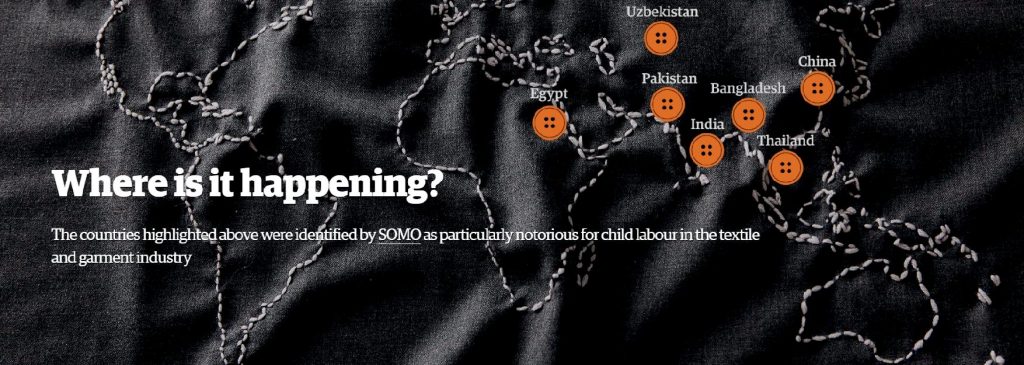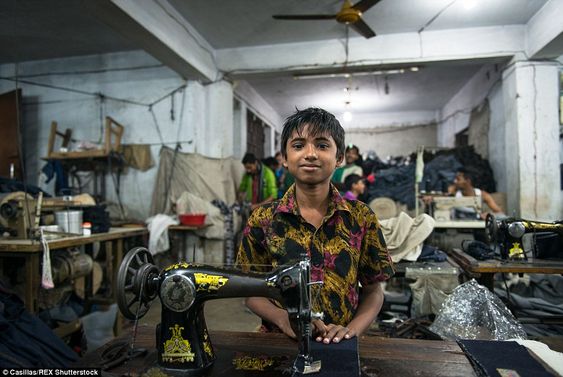CUSTOMER POINT OF VIEW – Child Labour

The ethical living trend is continuing to have a great impact in society. Customers are showing more awareness towards misbehaviour shown by the luxury industry in the past. From pollution to child labour. As a reaction, over the years, many changes have been made. Customer awareness, positive mentality and attitude towards people rights mean brands have to adapt.
Approximately 260 million children are in employment around the world, according to the International Labour Organisation. Of these, it is thought that 170 million are, what the UN defines as ‘work for which the child is either too young, or engaged in detrimental nature or conditions considered unacceptable for children’ and is prohibited. In numerous cases, these children are working for suppliers linked to big European luxury brands in factories producing textiles and garments.
Child labour is forbidden by law in most countries but continues to be rife in some of the poorest parts of the world.
A lot of unhappy customer refuse to buy products from luxury brands after in media it has been made public that luxury brands like Prada, Fendi and Dior where accused by using slave labour in the production process. The problem is that luxury brands are using suppliers to be able to produce enough and because is a big demand the suppliers contact subcontractors to be able to finish the orders. That is the moment where the information are getting lost and because the brands doesn’t check always all the details about their suppliers and their subcontractors is easy for this kind of error to happen. But they have the option of sign up for a code where child labour is complete prohibited.
The situation seems to be improving. Child labour is estimated to have declined by 30% between 2000 and 2012. But data suggests that 11% of children are working in conditions that deprive them of their right to go to school with interference from work.
These conditions exist as fast fashion pressures companies to find cheaper sources of labour. Cheaper labour is available in many of these 3rd world countries where textile and garment production takes place.

Sofie Ovaa, global campaign coordinator of Stop Child Labour, says: “There are many girls in countries like India and Bangladesh, who are willing to work for very low prices and are easily brought into these industries under false promises of earning decent wages.”
It has been known that recruiters from impoverished areas convince parents to send their daughters to spinning mills with promise of decent pay, accommodation, three meals a day, with further training and schooling available, and sums of cash after the passing of time. But the reality shows a very different story; child labour and modern slavery.
The supply chain in these industries show one of the biggest challenges facing luxury brands in combatting the child labour industry, as work is often sub-contracted, where strict guidelines are overlooked with the brands unaware of these changes and conditions.
Children are easy to manage as the combination of them being obedient and disciplined. There seems to be minimal supervision or due care such as from unions to help children understand their place and role within this industry. They are without a voice and so, manipulated that they will never understand that perhaps there are other choices available to them.

The Fair Wear Foundation have over 120 brands signed up to its code of labour practices, which strictly prohibit the use of child labour. Brands must endure regular audits that all suppliers must adhere to.
There are other accredited schemes, such as, Fairtrade Label Organisation, Global Organic Textile Standard, and the Ethical Trading Initiative, but all are known to struggle with the lack of transparency that exists with the textile and garment supply chain.
Adapting a good mentality created a lot of changes in society and helped a lot of children not to live and work anymore in this conditions. But it seems to be necessary a bit more than that. A good education and a better awareness of this cases will improve the situation. Even in school kids should be told about those inhumanities which are going on around the world, to be educate to react and protect others.
References:
The Guardian -Where, why and what can be done by Josephine Moulds: https://labs.theguardian.com/unicef-child-labour/
Ethical Trading Initiative – Child labour: https://www.ethicaltrade.org/issues/child-labour
The Economics of Consumer Actions against Products with Child Labour Content by Eric V. Edmonds: https://www.dartmouth.edu/~eedmonds/clwa.pdf
Slave Labour by Ariel Zilber, December 16, 2018: https://www.dailymail.co.uk/news/article-6500211/Luxury-fashion-brands-like-Prada-Fendi-use-exploited-factory-workers-make-products.html